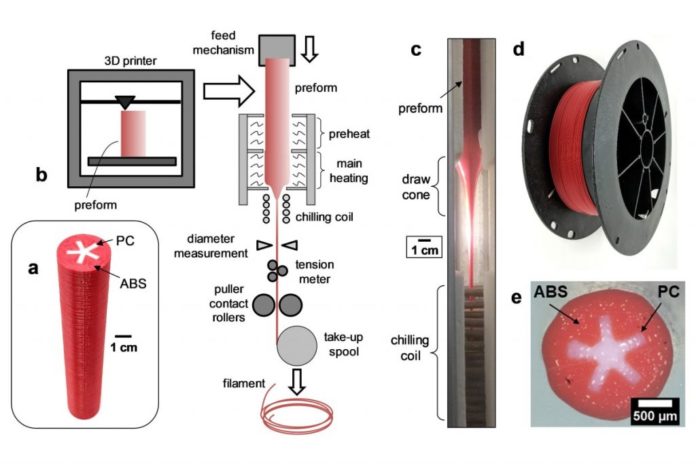The U.S. Army has been working on a new type of multi-polymer for the most widely-used desktop 3D Printers.
With the goal of saving money and facilitating fast printing of critical parts, the new filament aims to address some issues faced by some 3D Printers. These issues include poor strength and toughness, which prevented affordable printers from being used to resupply military parts on demand, especially at deployed locations, until now.
The Army’s new material overcomes those deficiencies. Soldiers are now likely to use low-cost printers to create parts that, once subjected to a few hours of heat, can achieve mechanical properties robust enough to withstand the rigors of field operations.
Dr. Eric D. Wetzel leads the Emerging Composites team and serves as the research area leader for Soldier Materials at the U.S. Army Combat Capabilities Development Command’s Army Research Laboratory. According to him, “the Army would like to be able to print parts in the field to simplify logistics by carrying digital part files instead of physical parts, but to date, the technologies for producing high-strength parts have not been practical in an expeditionary setting. These printers are too large, energy-hungry, delicate or messy for starters, and their feedstocks can require specialized storage requirements.”
The problem with FDM is that the technology lacks sufficient mechanical integrity for most engineering applications.
The research team used a novel thermal draw process to fabricate a dual material filament comprising acrylonitrile butadiene styrene, known as ABS. This dual material filament is then used as feedstock in a conventional FFF printer to create 3-D solid bodies with a composite ABS/polycarbonate structure.
This novel FDM filament will enable AM of parts with low-cost printers, parts whose mechanical properties could compete injection moulded plastics.
The Army’s research team is currently experimenting new material pairings, print conditions and annealing protocols to further improve mechanical properties and reduce processing times. Their goal is to reduce current annealing times of 24-48 hours to four hours or less.
Researchers are using a pilot manufacturing line to produce larger quantities of the filament over the next few months to provide material samples to a variety of Army transition partners.
“Having the option to additively manufacture parts from a high strength polymer via the FFF process, at the field, division, and/or depot level will certainly provide warfighters with the ability to produce better temporary parts much quicker — hours versus days or weeks — and at significantly lower costs — often pennies compared to tens of dollars, said Jeff Wallace, a mechanical engineer with the Army’s C5ISR Center at APG. “Additionally, Soldiers tend to improvise as needed, often finding their own design solutions to the issues they face. As such, offering them a higher strength polymer material that can be used in the desktop printers they have access to, affords them the opportunity to innovate on-the-fly, as necessary to temporarily solve greater numbers of supply and design challenges. Their designs would then be sent to the proper Engineering Support Activity for evaluation.”
Remember, you
can post free of charge job opportunities in the AM Industry on 3D ADEPT
Media or look for a job via our job board. Make sure to follow us on our
social networks and subscribe to our weekly newsletter. : Facebook, Twitter, LinkedIn & Instagram ! If you want to be featured
in the next issue of our digital magazine or if you hear a story that needs to
be heard, make sure to send it to contact@3dadept.com.






